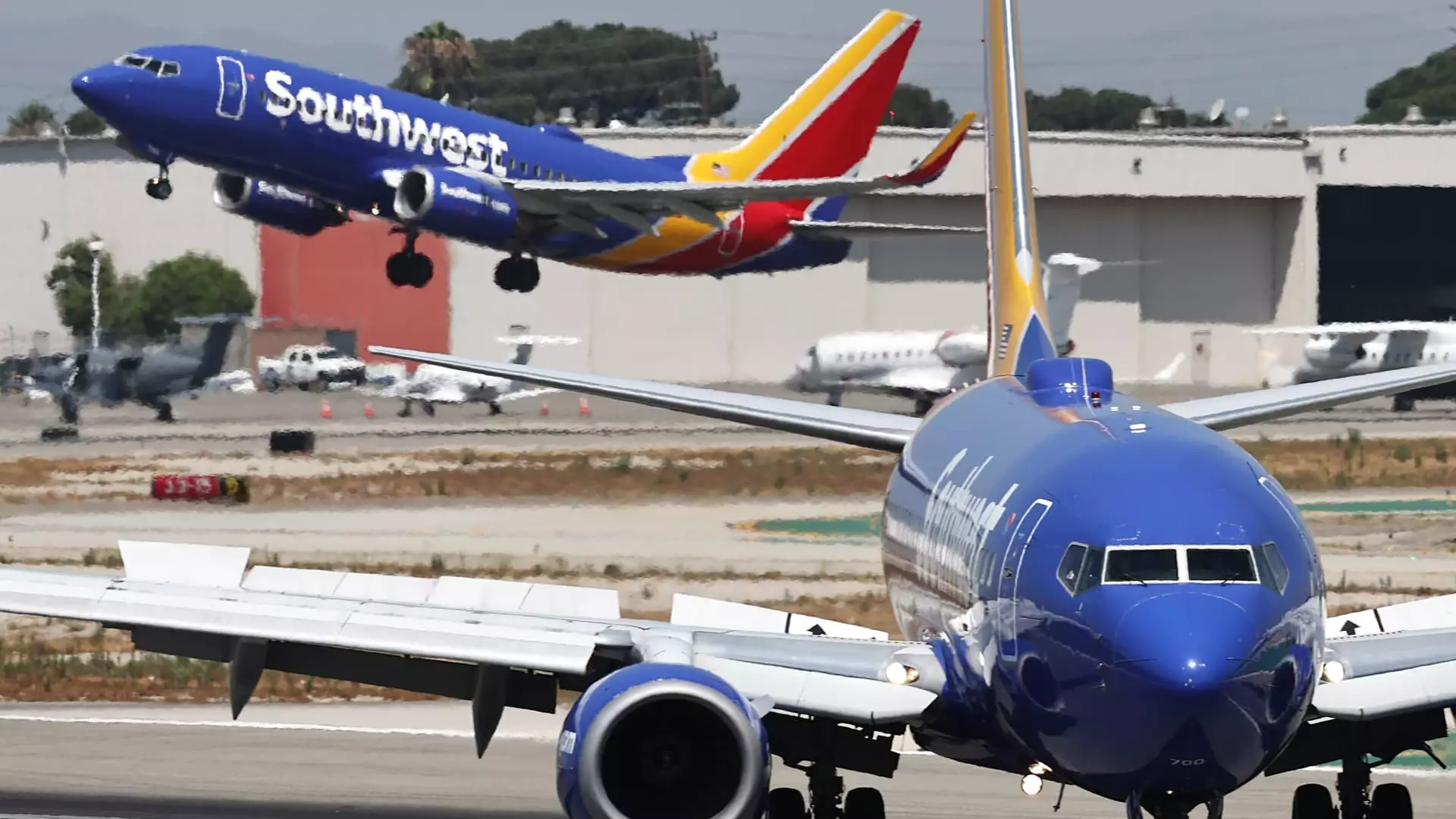In an era where the airline industry is undergoing significant transformations, Southwest Airlines has taken bold steps to revamp its business strategy. The airline’s recent announcement to raise its revenue forecasts for the third quarter signals a positive shift in its operational outlook. Forecasting a unit revenue increase of as much as 3% compared to the previous year, the airline has not only managed to turn around pessimistic initial estimations of a possible decline but also tapped into unexpected opportunities presented by the complications faced by competing airlines. A notable contributing factor to this optimistic projection was the rebooking of passengers whose original flights were disrupted by the CrowdStrike outage in July. This development illustrates Southwest’s agility in responding to challenges, albeit these are reactive measures rather than proactive strategic planning.
In an effort to bolster its governance structure amidst mounting scrutiny, Southwest announced the addition of Bob Fornaro, an esteemed figure in the airline sector, to its board of directors. Fornaro brings a wealth of experience, having previously served as the CEO of AirTran before its merger with Southwest in 2011. His appointment could signify the airline’s commitment to aligning its leadership with experienced voices that understand the intricacies of the market landscape. However, it raises questions about the existing leadership’s perceived shortcomings, particularly amidst pressures from activist investor Elliott Investment Management, which has demanded a shift in the airline’s upper management. The dynamic between board appointments and investor expectations underpins the continuing challenge Southwest faces as it seeks to convince stakeholders of its viable path forward.
On the crucial Investor Day held in Dallas, Southwest executives, led by CEO Bob Jordan, laid out their vision for the company, attempting to instill confidence among shareholders and industry analysts alike. The narrative presented emphasizes a commitment to increasing profitability through significant alterations to long-standing operational models. Changes include the introduction of assigned seating and the rollout of extra-legroom seats aimed at diversifying revenue streams. While these updates hold the potential for profitability, they rely heavily on regulatory approval and logistical challenges, with some initiatives, such as the new seating arrangements, not expected to be implemented until 2026. This long timeline suggests that the airline might face persistent challenges in the interim, particularly in maintaining operational efficiency and customer satisfaction.
Notably, Southwest reaffirmed its commitment to its customer-first philosophy, particularly its policy of allowing two free checked bags. While this policy may appear counterintuitive in an age when ancillary fees dominate the airline market, the company argues that it has proven beneficial in gaining market share, outweighing potential revenue losses. This stance embodies a brand loyalty strategy that could resonate with travelers caught in the storm of rising costs, thus differentiating Southwest from its competitors. However, sustaining such policies may prove increasingly difficult under pressure from shareholders seeking short-term gains, leading to a fundamental tension between profitability and customer-centricity.
Despite its optimistic forecasts, Southwest faces substantial operational challenges, including a shortfall of new aircraft due to ongoing delays from Boeing. The bottleneck in securing the necessary fleet has forced the airline to reevaluate its service routes, leading to cuts in unprofitable areas such as Atlanta. It raises concerns about Southwest’s competitive positioning in key markets and potential impacts on passenger experience. The impending departure of Gary Kelly, the outgoing executive chairman and former CEO, adds another layer of uncertainty to the airline’s future direction amidst ongoing deliberations about leadership changes urged by Elliott.
As Southwest Airlines maneuvers through these multifaceted challenges, it must strike a delicate balance between embracing transformative changes and keeping its core operational strengths intact. The coming years will be pivotal as the airline works to not only expand its revenue but also maintain the customer-centric ethos that has historically set it apart in a fiercely competitive market. The trajectory of Southwest Airlines underscores both the opportunities and obstacles that characterize an industry at the crossroads of recovery and innovation. With determined vision and strategic adaptation, the airline may well navigate its way into a new era, or it may find itself contending with the very market forces that prompted its rethinking.


Leave a Reply